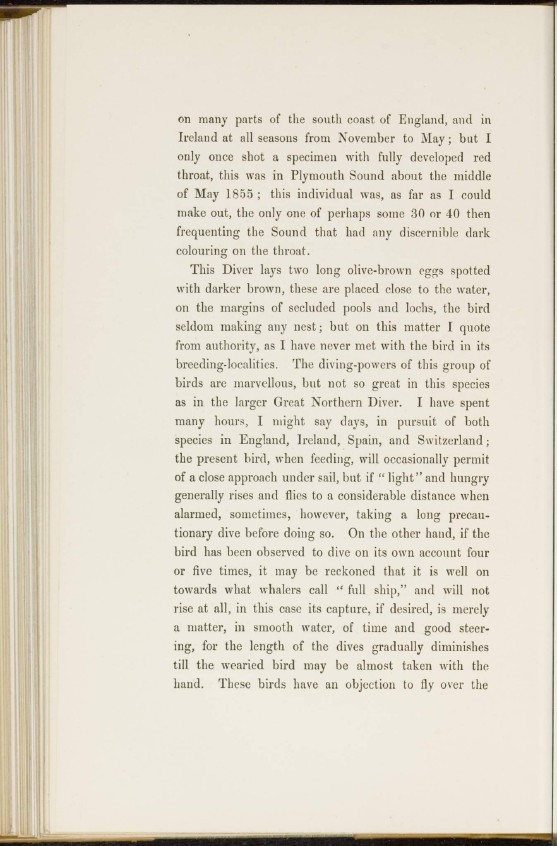
on many parts of the south coast of England, and in
Ireland at all seasons from November to May; but I
only once shot a specimen with fully developed red
throat, this was in Plymouth Sound about the middle
of May 1855 ; this individual was, as far as I could
make out, the only one of perhaps some 30 or 40 then
frequenting the Sound that had any discernible dark
colouring on the throat.
This Diver lays two long olive-brown eggs spotted
with darker brown, these are placed close to the water,
on the margins of secluded pools and lochs, the bird
seldom making any nest; but on this matter I quote
from authority, as I have never met with the bird in its
breeding-localities. The diving-powers of this group of
birds are marvellous, but not so great in this species
as in the larger Great Northern Diver. I have spent
many hours, I might say clays, in pursuit of both
species in England, Ireland, Spain, and Switzerland;
the present bird, when feeding, will occasionally permit
of a close approach under sail, but if " light" and hungry
generally rises and flies to a considerable distance when
alarmed, sometimes, however, taking a long precautionary
dive before doing so. On the other hand, if the
bird has been observed to dive on its own account four
or five times, it may be reckoned that it is well on
towards what whalers call " full ship," and will not
rise at all, in this case its capture, if desired, is merely
a matter, in smooth water, of time and good steering,
for the length of the dives gradually diminishes
till the wearied bird may be almost taken with the
hand. These birds have an objection to fly over the